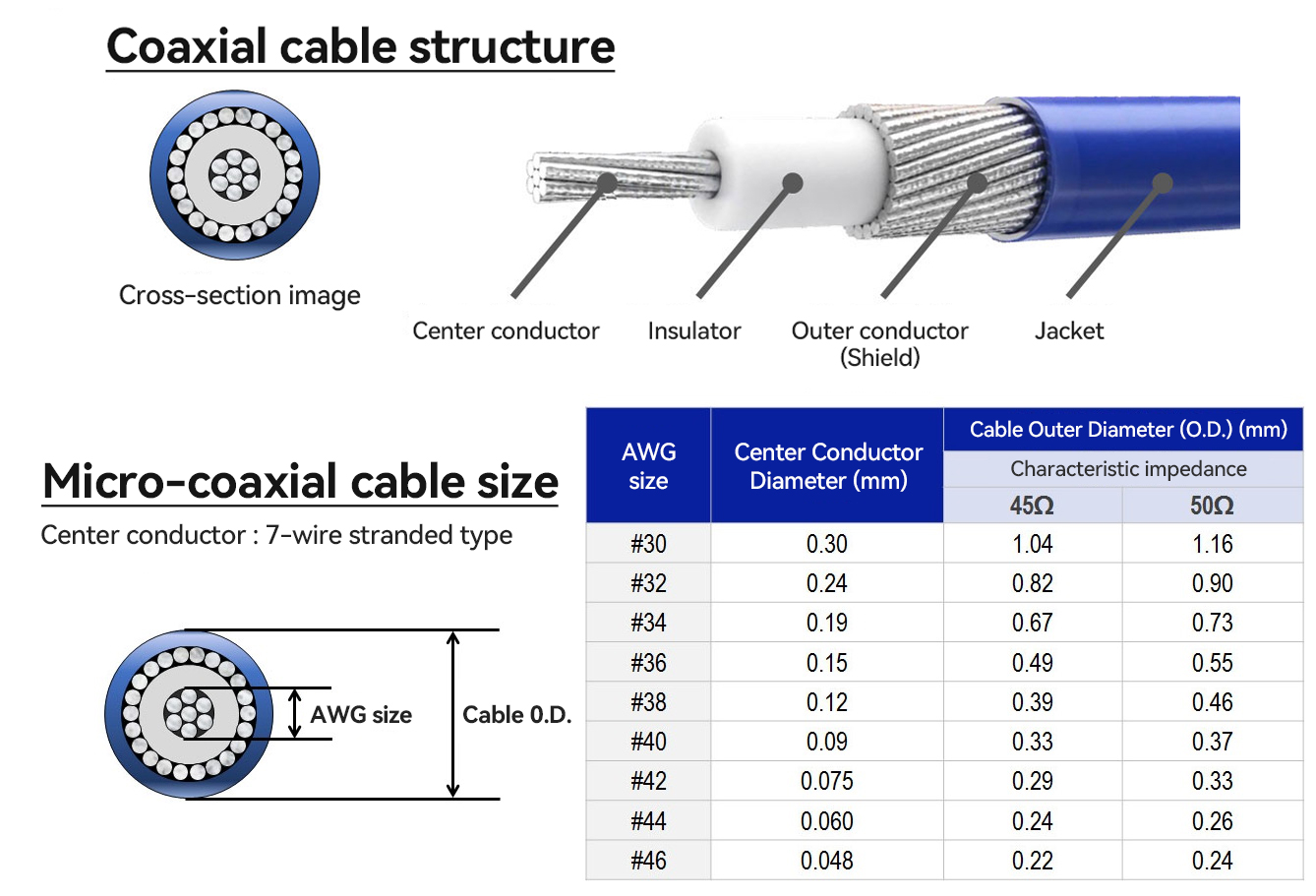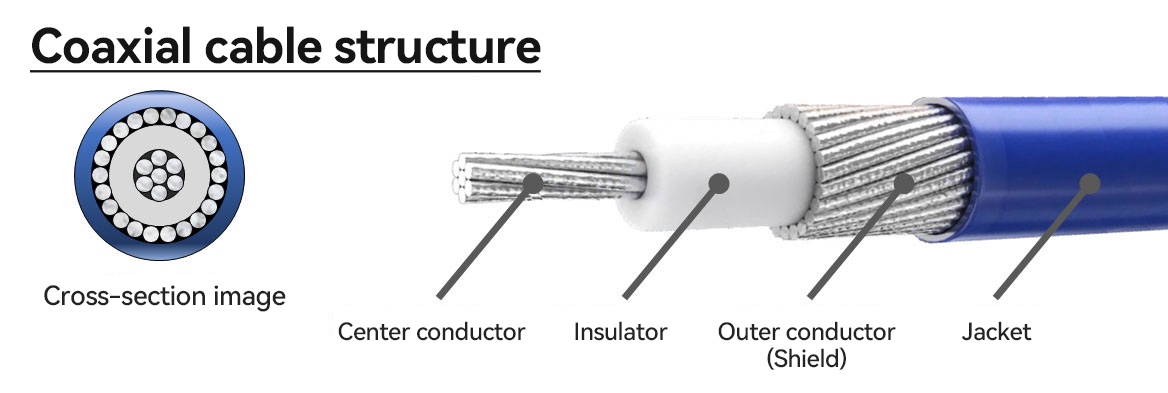The design principles and application of Coaxial cables
A Coaxial Cable is a high-frequency transmission line composed of two conductors, including an inner conductor, an insulating layer, an outer conductor (shielding layer), and an outer sheath. The central conductor of a coaxial cable is used for signal transmission. The outer metal shielding mesh of the coaxial cable serves two purposes: one is to act as a common ground wire for the signal, providing a current loop for the signal; the other is to act as a shielding mesh for the signal, making the electrical signal transmitted by the central conductor less susceptible to external electromagnetic waves and electromagnetic noise, and suppressing the interference of electromagnetic noise on the signal. The central conductor and the shielding net are located between the semi-foamed polypropylene insulation layer. The insulation layer determines the transmission characteristics of the cable and effectively protects the conductors in the middle. Its core design feature is that the inner and outer conductors are arranged coaxially, thereby effectively suppressing electromagnetic interference.
The size of the central conductor used in coaxial cables follows the American wire gauge (AWG) standard. The larger the AWG number, the smaller the size of the central conductor. Generally speaking, coaxial lines with an outer diameter (O.D.) of 1 millimeter or less are called "extremely fine coaxial" lines. Ultra-fine coaxial cables are widely used for signal transmission between internal module boards of personal computers, tablet computers, smart phones and other devices, as well as between precision instruments in medical, industrial, automotive, aviation and other fields.

The following is the detailed structure and features of coaxial cables:
The structure of the coaxial axis
1. Inner conductor (central conductor)
Material: It is usually single or multiple strands of copper wire (bare copper, tin-plated copper or silver-plated copper). Solid copper is used in high-frequency applications to enhance conductivity.
Function: The main channel for transmitting electrical signals.
2. Insulating layer (dielectric layer)
Materials: Low-loss materials such as polyethylene (PE), polytetrafluoroethylene (PTFE), and foamed plastics.
Function: Fix the distance between the inner conductor and the outer conductor, reduce signal attenuation, and its dielectric constant affects the signal transmission speed.
3. Outer conductor (shielding layer
Structure: It is divided into woven mesh (with good flexibility but slightly weaker anti-interference), aluminum foil (full coverage shielding), or a combination of both.
Function: Shield external electromagnetic interference and prevent signal leakage at the same time.
3. Outer sheath
Materials: PVC, PE or flame-retardant materials (such as low smoke and halogen-free materials).
Function: Protect the internal structure from mechanical damage, moisture and chemical corrosion.

Key parameters
Characteristic impedance: Commonly 50Ω (for communication and radio frequency) and 75Ω (for television and video). Matching impedance can reduce reflection.
Attenuation coefficient: It increases with the rise of frequency. The foamed insulation layer can reduce losses.
Shielding efficiency: The combination of aluminum foil and woven mesh can achieve a shielding effect of over 90dB.
Bending radius: The minimum bending radius affects the flexibility of wiring (usually 5 to 10 times the wire diameter).
Application scenarios
High-frequency signal transmission: cable television (CATV), satellite communication, radio frequency connection (such as base station antennas).
Network communication: Early Ethernet (10BASE2/10BASE5, now replaced by optical fiber).
Instrument connection: oscilloscope probe, RF test equipment.
Advantages and disadvantages
Advantages: Strong anti-interference ability, large bandwidth (up to several GHz), suitable for long-distance transmission.
Disadvantages: It is more expensive than twisted-pair cables, requires attention to impedance matching during installation, and has significant loss at high frequencies.
The design of coaxial cables makes them irreplaceable in scenarios that require stable shielding and wideband transmission, especially in the fields of radio frequency and video, where they are still widely used.
